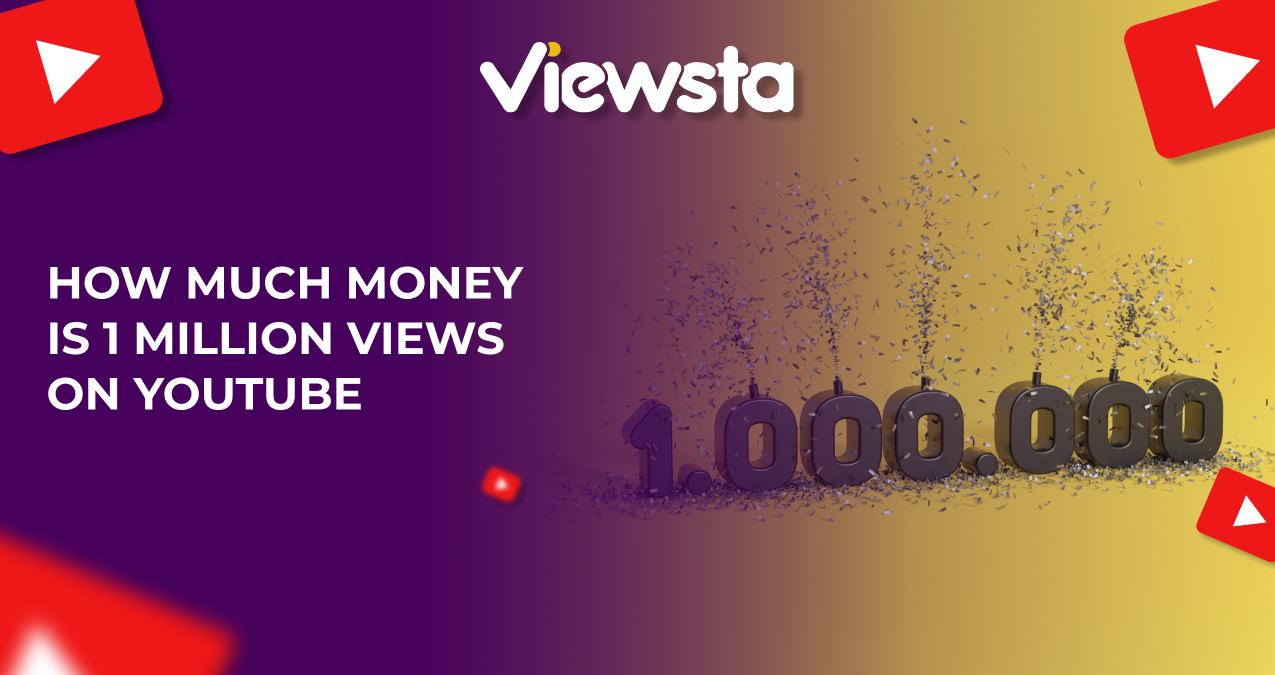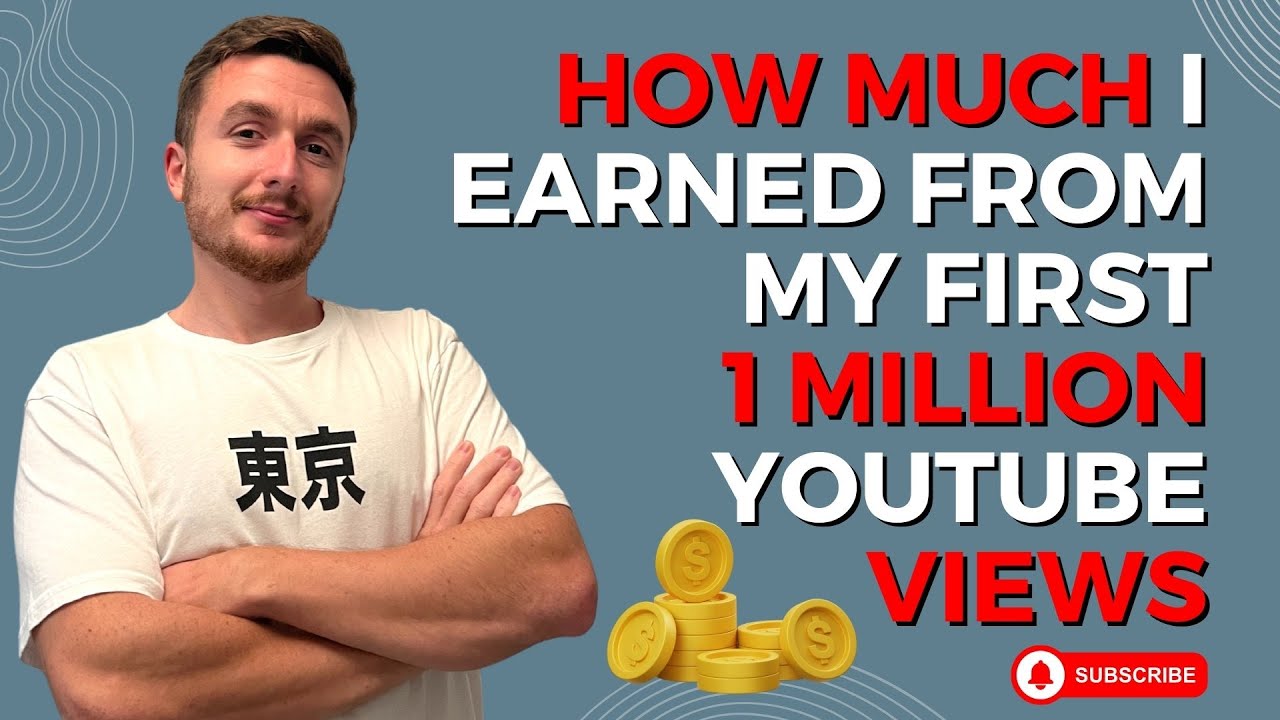Introduction to YouTube Monetization

YouTube has revolutionized how creators share content and earn money. With over two billion monthly users, it's a platform where anyone can turn their passion into profit. But how does monetization work? Simply put, YouTube monetization allows creators to earn revenue from ads, memberships, and other features. The key is understanding how to effectively tap into these revenue streams.
To start monetizing your channel, you need to join the YouTube Partner Program (YPP). This requires meeting certain eligibility criteria, including:
- At least 1,000 subscribers
- 4,000 watch hours in the past 12 months
- A linked AdSense account
Once you’re in, you can start earning money based on various factors related to your content and audience. This blog post dives deeper into understanding what goes into your earnings and what you can expect from one million views.
Also Read This: How to Log Out of YouTube on Roku: A Step-by-Step Guide
Factors Influencing Earnings per View

When it comes to YouTube earnings, not all views are created equal. Several factors influence how much money a creator can make from one million views, and understanding these can help you strategize your content for better monetization.
Here are the primary factors:
- Ad Types: The type of ads displayed on your videos significantly impacts your earnings. YouTube offers various ad formats like:
- Display ads
- Overlay ads
- Skippable video ads
- Non-skippable video ads
- Audience Demographics: Your audience’s location plays a crucial role. Advertisers pay more to reach viewers in countries like the USA, Canada, and Australia compared to viewers in other regions. For instance, if most of your audience is from high-income countries, you could earn more per view.
- Content Niche: Some niches are more lucrative than others. For example, tech, finance, and health-related content generally attract higher ad rates compared to lifestyle or gaming channels. This is due to the types of products being advertised and the target audience's purchasing power.
- Engagement Rates: Higher engagement rates (likes, comments, shares) can lead to better ad revenue. Engaged viewers are more likely to watch longer, resulting in more ads being displayed. For example, a video with a high retention rate can lead to more ads being shown, increasing earnings.
- Seasonality: Earnings can fluctuate throughout the year. For instance, during holidays or special events (like Black Friday), advertisers ramp up their spending, which can increase your CPM (cost per thousand impressions).
Typically, skippable ads might generate lower revenue compared to non-skippable ads since viewers can skip them after a few seconds.
In conclusion, while one million views is a great milestone, understanding these factors can help you maximize your earnings. By focusing on your audience, niche, and engagement strategies, you can create content that not only attracts viewers but also generates sustainable revenue. So, as you create your next video, keep these factors in mind to make the most out of your YouTube journey!
Also Read This: Shuffling a YouTube Playlist for Randomized Favorites
3. Average Earnings for One Million Views

When creators talk about their earnings on YouTube, a common benchmark that comes up is the infamous "one million views." But how much can you actually make from that milestone? The answer isn't straightforward, as it can vary widely based on several factors.
On average, YouTube creators earn between $1,000 to $5,000 for one million views. This range can be influenced by:
- Ad Formats: Different types of ads (skippable, non-skippable, bumper ads) yield different payouts. Non-skippable ads generally pay more.
- Audience Location: Viewers from countries like the U.S. or Canada typically generate higher earnings due to higher CPM (Cost Per Mille) rates compared to viewers from regions with lower advertising budgets.
- Niche Content: Channels focused on lucrative niches such as finance or technology may earn more per view than those in entertainment or vlogging.
- Engagement Rate: Videos that keep viewers engaged tend to show more ads, boosting overall earnings.
For example, a gaming channel with a strong following may earn closer to $5,000 for a million views due to high viewer engagement and advertisements targeting lucrative demographics. On the other hand, a lifestyle vlogger might find themselves on the lower end of the spectrum, around $1,000 to $2,000.
It's also essential to consider that not all views are equal. If your video goes viral and attracts a lot of casual viewers who don’t typically engage with ads, you may see lower earnings than a video that gets fewer views but is watched by a dedicated audience that interacts with the ads.
Also Read This: How to Get Subtitles off YouTube TV for a Better Viewing Experience
4. Breakdown of Revenue Sources on YouTube
When it comes to earning money on YouTube, most creators think solely of ad revenue. However, there are multiple streams through which creators can monetize their content. Let’s dive into the different ways YouTube channels can generate income:
| Revenue Source | Description | Potential Earnings |
|---|---|---|
| Ad Revenue | Money earned from ads displayed on videos through the YouTube Partner Program. | Varies widely; average $1,000 - $5,000 per million views. |
| Channel Memberships | Monthly subscriptions from fans for exclusive perks like badges and content. | $4.99/month per member; high engagement can lead to significant income. |
| Super Chat & Super Stickers | Features during live streams that allow fans to pay for their messages to stand out. | Can range from $1 to over $100 per message. |
| Sponsorships | Brand deals where companies pay creators to promote their products. | Can be anywhere from a few hundred to several thousand dollars per video. |
| Merchandising | Selling branded merchandise like shirts, hats, and other products. | Varies; successful channels can earn thousands per month. |
Ultimately, diversifying your revenue sources can greatly enhance your earnings on YouTube. While ad revenue is a significant part of the equation, sponsorships, memberships, and merchandise can provide that extra financial cushion that many creators strive for. So, if you’re looking to maximize your earning potential, it’s time to think beyond just views!
Also Read This: Why is YouTube Search So Bad? Common Problems with YouTube's Search Feature
5. Tips to Increase Your Video Views and Earnings
If you’re looking to boost your YouTube views and, in turn, your earnings, here are some actionable tips you can implement right away:
- Optimize Your Titles and Thumbnails: Your title and thumbnail are the first things viewers see, so make them count! Use engaging titles that include relevant keywords. For example, instead of "Cooking Tips," try "5 Easy Cooking Hacks You Wish You Knew!" Pair this with a vibrant thumbnail that captures the essence of your video.
- Engage with Your Audience: Building a community is key. Respond to comments, ask viewers questions, and encourage them to like, share, and subscribe. A simple "What do you think about this tip?" can spark a conversation and increase engagement.
- Leverage Social Media: Share your videos on other platforms like Instagram, Twitter, and Facebook. Create teasers or snippets that entice your audience to click through to YouTube. For instance, posting a quick behind-the-scenes clip on Instagram Stories can intrigue your followers.
- Collaborate with Other Creators: Partnering with other YouTubers in your niche can broaden your reach. Consider guest appearances or shout-outs. For example, if you’re a gaming channel, collaborating with another gaming YouTuber can introduce you to their audience.
- Post Consistently: Consistency is crucial in maintaining viewer interest. Create a content schedule and stick to it. Whether it’s once a week or twice a month, let your audience know when to expect new content.
Remember, increasing views is often about finding what resonates with your audience. Monitor your analytics to see what types of videos perform best and iterate from there. With dedication and creativity, you’ll see your views—and earnings—climb!
6. Case Studies of Successful YouTube Channels
To truly grasp how to navigate YouTube earnings, let’s take a look at some successful channels that have turned their passion into profit.
Case Study 1: MrBeast
MrBeast, known for his extravagant challenges and philanthropic acts, has skyrocketed to fame with millions of subscribers. His unique approach involves:
- High production values that captivate viewers.
- Engaging storytelling that keeps audiences glued to the screen.
- Creative giveaways and challenges that encourage sharing.
His strategy? Create buzzworthy content that encourages interaction, leading to increased views and ad revenue.
Case Study 2: Tasty
Tasty, the food channel by BuzzFeed, has mastered the art of bite-sized recipes. Their success stems from:
- Visually appealing videos that make cooking look easy and inviting.
- Short, snappy content that’s perfect for social media sharing.
- Engagement through user-generated content, encouraging viewers to share their own cooking attempts.
By focusing on quality and shareability, Tasty has amassed millions of views, leading to substantial earnings through sponsorships and ad revenue.
Case Study 3: Marques Brownlee (MKBHD)
Marques Brownlee, a tech reviewer, exemplifies how expertise can lead to success. His path includes:
- In-depth reviews that showcase his knowledge and passion for technology.
- High-quality production and editing that enhance viewer experience.
- Building a personal brand that attracts sponsorships and endorsements.
His commitment to quality content has not only grown his viewership but has also opened doors to lucrative partnerships with leading tech companies.
These case studies illustrate that success on YouTube is achievable through creativity, consistency, and a deep understanding of your audience. By applying similar strategies, you too can work towards increasing your views and earnings!
 admin
admin








